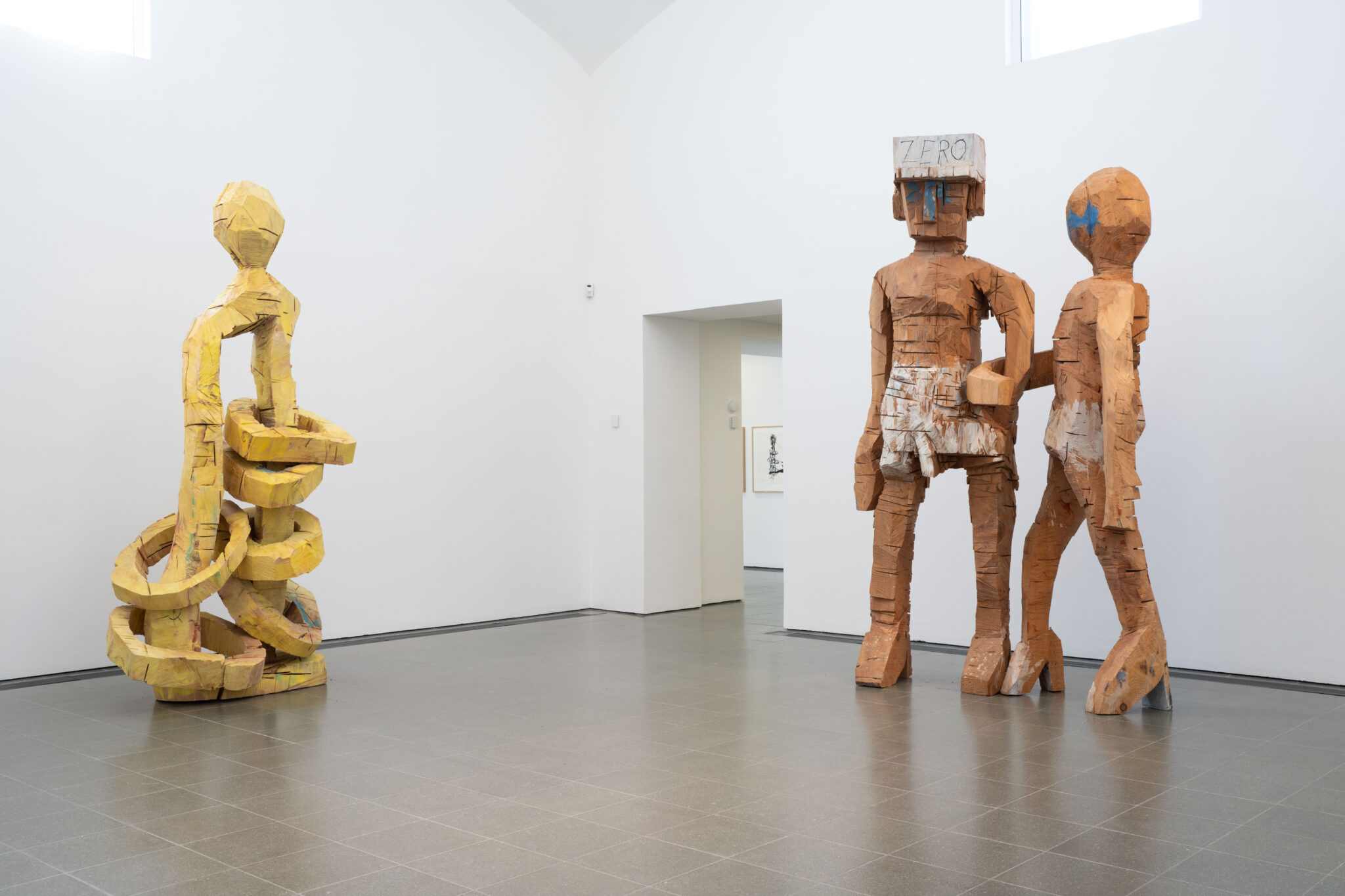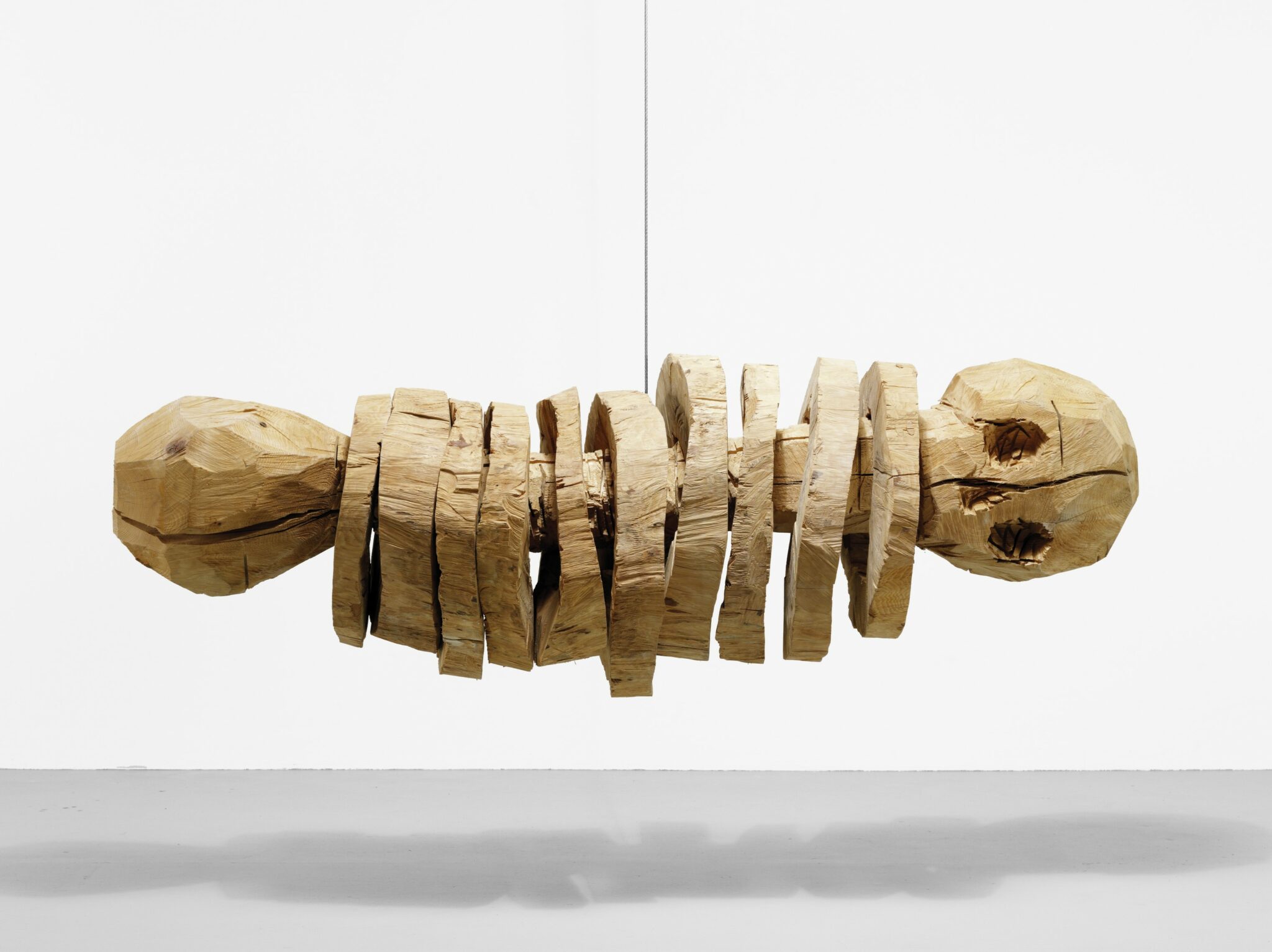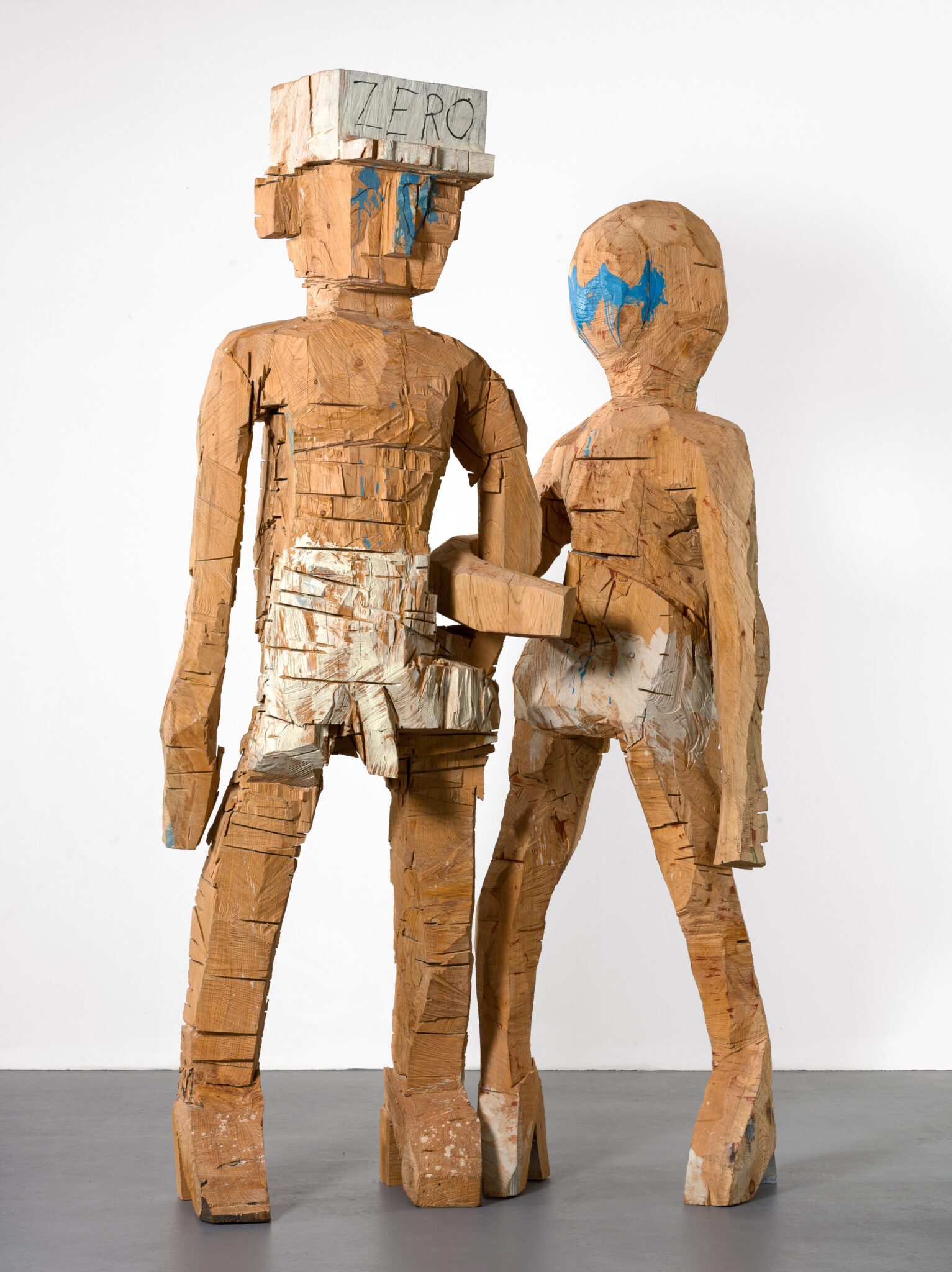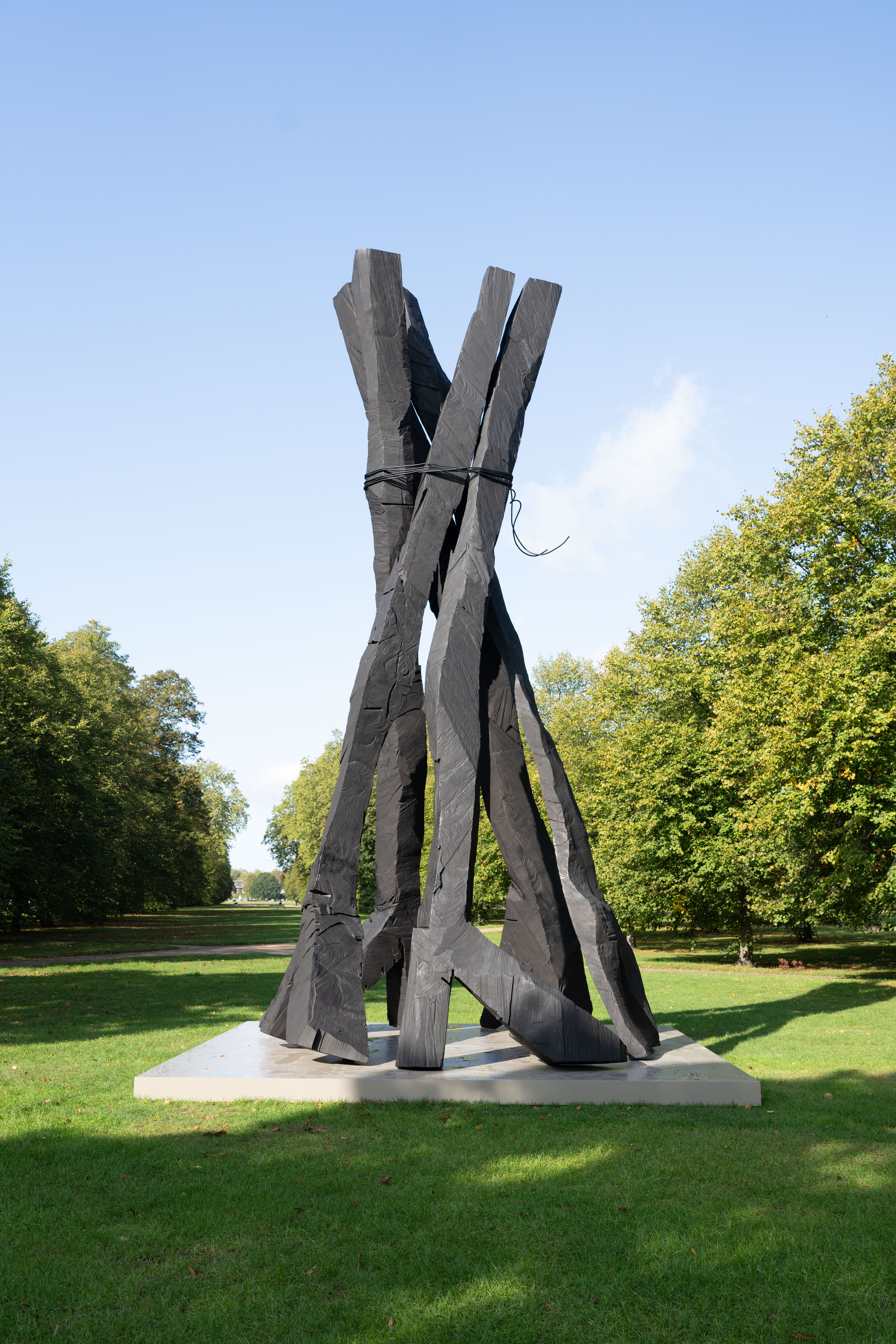‘An oxymoron of frailty’: Georg Baselitz’s golem-like sculptures settle into the Serpentine
Georg Baselitz: Sculptures 2011–2015 is the artist’s first solo show at London’s Serpentine

There may have been a little risk in the Serpentine Galleries’ decision to stage a late-career retrospective of Georg Baselitz’s works at the same time as Frieze London; but the steady stream of visitors showing up for Georg Baselitz: Sculptures 2011–2015, the German artist’s first solo show with the institution is a telling vindication of the gamble.
And after just a few moments wandering through the Serpentine South gallery’s sunlit rooms (a quiet balm after the frenzy of Frieze) among the massive timber maquettes - there are ten in all, including a giant nine-metre-tall bronze sculpture Zero Dom (Zero Dome) (2015-2021) that rears its patinated bulk outdoors in the park - it’s easy to understand the draw.

Georg Baselitz, Zero Mobil (Zero Mobile), 2013-2014. © Georg Baselitz 2023. Photo: Jochen Littkemann, Berlin
The pieces are almost golem-like in their totemic, faceless quality. Their human provenance may be evident in the fact that they have a head, torso, arm and legs, but they have been carved with a pleasing crudeness that is accentuated by the bulk of the form. Exhibit A: the giant hoops that ring around the torso of Louise Fuller (2013), a joyfully reductionist homage to the pioneer of modern dance.
As one of his generation’s foremost pioneer post-war artists, Baselitz, now 85, has made a career upending the expectations and perspectives of the viewer, first by drawing human figures upside down and then ratcheting up the sense of unbalanced dislocation with sculptures that have grown progressively more colossal with the years.
There is an ineffable primal quality to these wooden behemoths - each bulk cut by saws, axes and chisels from a single tree trunk, the rough hewn edges still viscerally extant - and yet, there is also an unexpected lightness and playfulness to their heft, a quality that Hans Ulrich Obrist, the Serpentine Galleries’ artistic director, describes as an ‘oxymoron of frailty that demonstrates Baselitz’s fortitude’.

Georg Baselitz, Sing Sang Zero, 2011. © Georg Baselitz 2023. Photo: Jochen Littkemann, Berlin
And yet, somehow, despite the size of the works on display at the Serpentine South, Baselitz never alienates the viewers. Strangely, the emotional resonance is one of familiarity and comfort. Part of the reason for this connection might stem from the fact that much of Baselitz’s work is essentially autobiographical.
Which explains Sing Sang Zero (2011), a self-portrait of him and his wife, Elke. And BDM Gruppe (BDM Group) (2012), a triptych of stick figures that represent an uncomfortable memory of his sister walking arm-in-arm with her two friends, all three, members of the BDM, or League of German Girls, a Nazi youth movement.
Wallpaper* Newsletter
Receive our daily digest of inspiration, escapism and design stories from around the world direct to your inbox.
As Baselitz recently pointed out, ‘When I work, I always think about my past. My background was very ordinary and rural in a place far off the beaten track. When I make a sculpture, the goal is not a priority; it is more like a poetry that slowly unfolds.’

Georg Baselitz, Zero Dom (Zero Dome), 2015/2021. Courtesy Thaddaeus Ropac gallery, London · Paris · Salzburg · Seoul + Private Collection © Georg Baselitz 2023, photographed by Markus Kormann
Given the autobiographical nature of the work, Obrist and his curatorial team might have simply let Baselitz’s pieces speak for themselves. Instead, they have layered the viewing experience by adding some 70 drawings and sketches in pencil, ink and pen to provide what Obrist calls ‘a glimpse into the studio of the artist, juxtaposing the artist’s process in relation to the highly physical and raw processes he employs to make the works’.
More rewardingly, Obrist connects Baselitz’s work to a younger generation of creatives with a catalogue written by contemporary artists - among them Alvaro Barrington and Erwin Wurm - who reflect on Baselitz and his outsized influence on their works and careers. Tracy Emin’s letter hailing his ‘unapologetic art’ is particularly moving, the artist writing, ‘In the 1990s when it felt to me that the emotional doors of art were closed, you were there forcefully trying to smash them open. You kept the gateways open for artists like me.’
Georg Baselitz: Sculptures 2011 - 2015 takes place 5 October 2023 – 7 January 2024 at the Serpentine
Daven Wu is the Singapore Editor at Wallpaper*. A former corporate lawyer, he has been covering Singapore and the neighbouring South-East Asian region since 1999, writing extensively about architecture, design, and travel for both the magazine and website. He is also the City Editor for the Phaidon Wallpaper* City Guide to Singapore.
-
 Tour the best contemporary tea houses around the world
Tour the best contemporary tea houses around the worldCelebrate the world’s most unique tea houses, from Melbourne to Stockholm, with a new book by Wallpaper’s Léa Teuscher
By Léa Teuscher
-
 ‘Humour is foundational’: artist Ella Kruglyanskaya on painting as a ‘highly questionable’ pursuit
‘Humour is foundational’: artist Ella Kruglyanskaya on painting as a ‘highly questionable’ pursuitElla Kruglyanskaya’s exhibition, ‘Shadows’ at Thomas Dane Gallery, is the first in a series of three this year, with openings in Basel and New York to follow
By Hannah Silver
-
 Australian bathhouse ‘About Time’ bridges softness and brutalism
Australian bathhouse ‘About Time’ bridges softness and brutalism‘About Time’, an Australian bathhouse designed by Goss Studio, balances brutalist architecture and the softness of natural patina in a Japanese-inspired wellness hub
By Ellie Stathaki